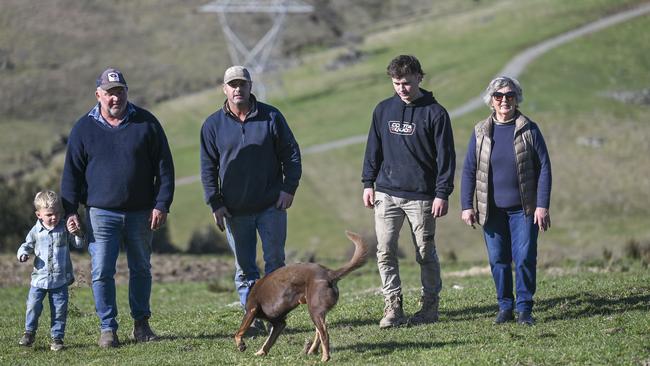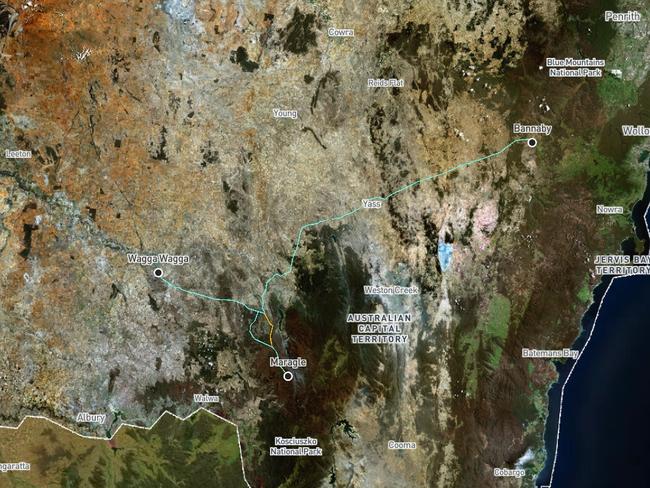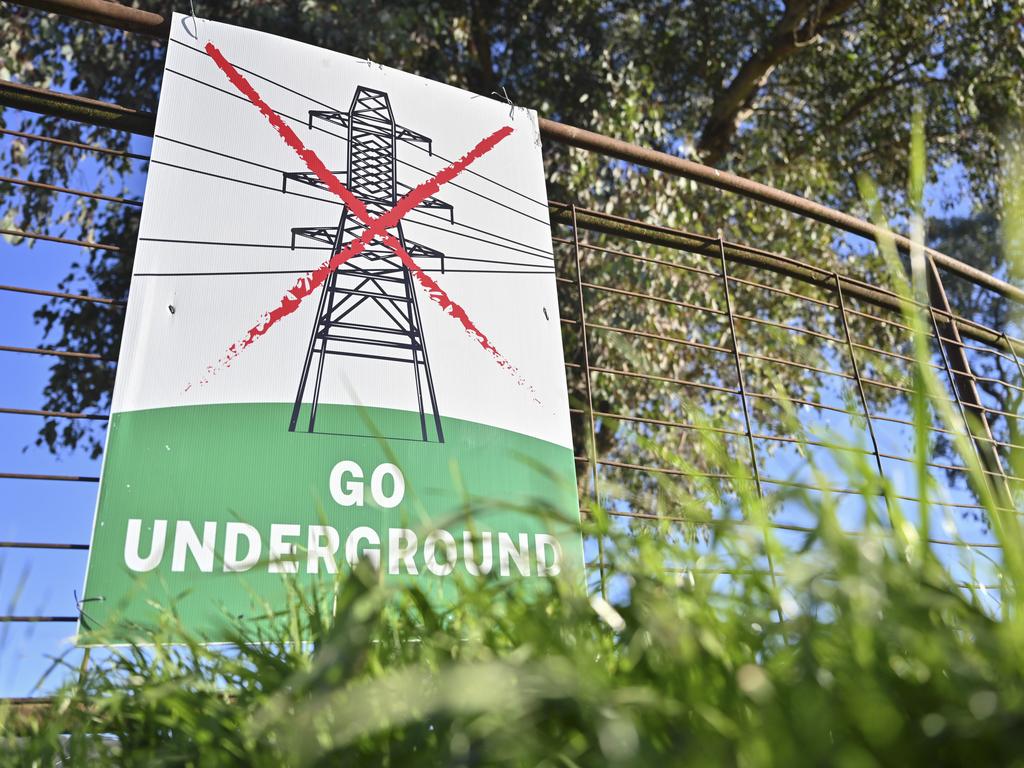Transmission towers to move in new line for Humelink route
Community revolt against the Rewiring the Nation push has forced part of the controversial Humelink transmission route to be altered around the Snowy Valleys stronghold of Batlow.

Community revolt against the federal government’s Rewiring the Nation push has forced part of the controversial Humelink transmission route to be altered around the Snowy Valleys stronghold of Batlow.
The decision to move the proposed towers off eight private properties and in to state forest comes as another NSW parliamentary inquiry was formed to examine whether the project should go underground – just weeks after a “sham’’ Labor-led inquiry supported Transgrid’s preferred overground option.
It’s another hit to the federal government’s planned “energy superhighway” to connect renewables to the grid, which has been beset by delays, confusion, cost blowouts and fierce community resistance.
The 500kV overhead transmission project, one of Australia’s largest energy infrastructure projects, has hit roadblocks from the start with landholders along the 360km line connecting Wagga Wagga, Bannaby and Maragle resisting the construction of overhead lines and towers on their properties and insisting the project go underground.
The new NSW inquiry is not due to report until March 24 next year, potentially further delaying construction. Costs have already soared to $4.9bn, up from $3.3bn. The first estimate, in January 2020, was just $1.35bn.
Transgrid told the previous inquiry that undergrounding would result in substantial additional cost, lengthy delays and would be unlikely to receive regulatory approval. However, the chair of the new inquiry, Greens MP Cate Faehrmann, said the fight to put the project underground was in line with expert evidence.
“During the previous inquiry, every witness we heard from, bar Transgrid, opposed overhead transmission lines.
“Transgrid has no social licence to build Humelink with overhead transmission lines yet the government controlled the numbers to produce a report that made findings and recommendations to the contrary,’’ Faehrmann said.
“This new inquiry will ensure the community’s concerns are genuinely heard and acted upon.’’

Resistance is fierce in Batlow, a small township between Tumut and Tumbarumba which was badly hit in the 2019-20 bushfires.
Many landholders locked their gates and refused to negotiate when Transgrid came knocking and their revolt appears to have paid off.
In a Humelink update this week the network operator said: “Following six months of investigations and consultation with impacted landowners, Transgrid has determined that the alternate western route through Green Hills State Forest is the most viable route for Humelink.’’
It said the new route would remove landowners from the project, and reduce community and visual impact. It is understood the new route is about 10km longer, but a Transgrid spokesperson said it was cost neutral as it had fewer biodiversity impacts and access tracks were already in place for construction.
“We thank landowners and the community for their time and patience during this process,” the spokesperson said.
“We recognise the project has been a significant burden for some landowners.’’
It is understood eight landholders will be spared but one of the most affected families, the Purcells, are still impacted.
“It looks like we’ve gone from 14 towers to eight so it will still come on our property. It’s still bad, but not as bad as it was,’’ Dave Purcell said.
“Transgrid are still pestering us, wanting to talk compensation and access but we’re not letting them on.’’
Landholders first proposed altering the route more than a year ago, plotting a link through public land that included two adjoining softwood forests that had been almost entirely destroyed in the Dunns Road fire.
Transgrid confirmed the proposal for the altered route was brought to it by landholders, describing it as a win for the consultation process.
Andrea Sturgess, who was facing the prospect of six new towers on the 156ha cattle and eucalyptus oil farm she runs with her husband Paul, said there was no real sense of relief in the announcement.
“We don’t believe anything that’s on a piece of paper. We won’t believe it until we see construction start,’’ she said.
The landholders contacted by The Australian said they would stay in the fight to have the project buried underground.
Transgrid still expects to begin construction on Humelink in early 2025, with completion by mid-2026.





To join the conversation, please log in. Don't have an account? Register
Join the conversation, you are commenting as Logout